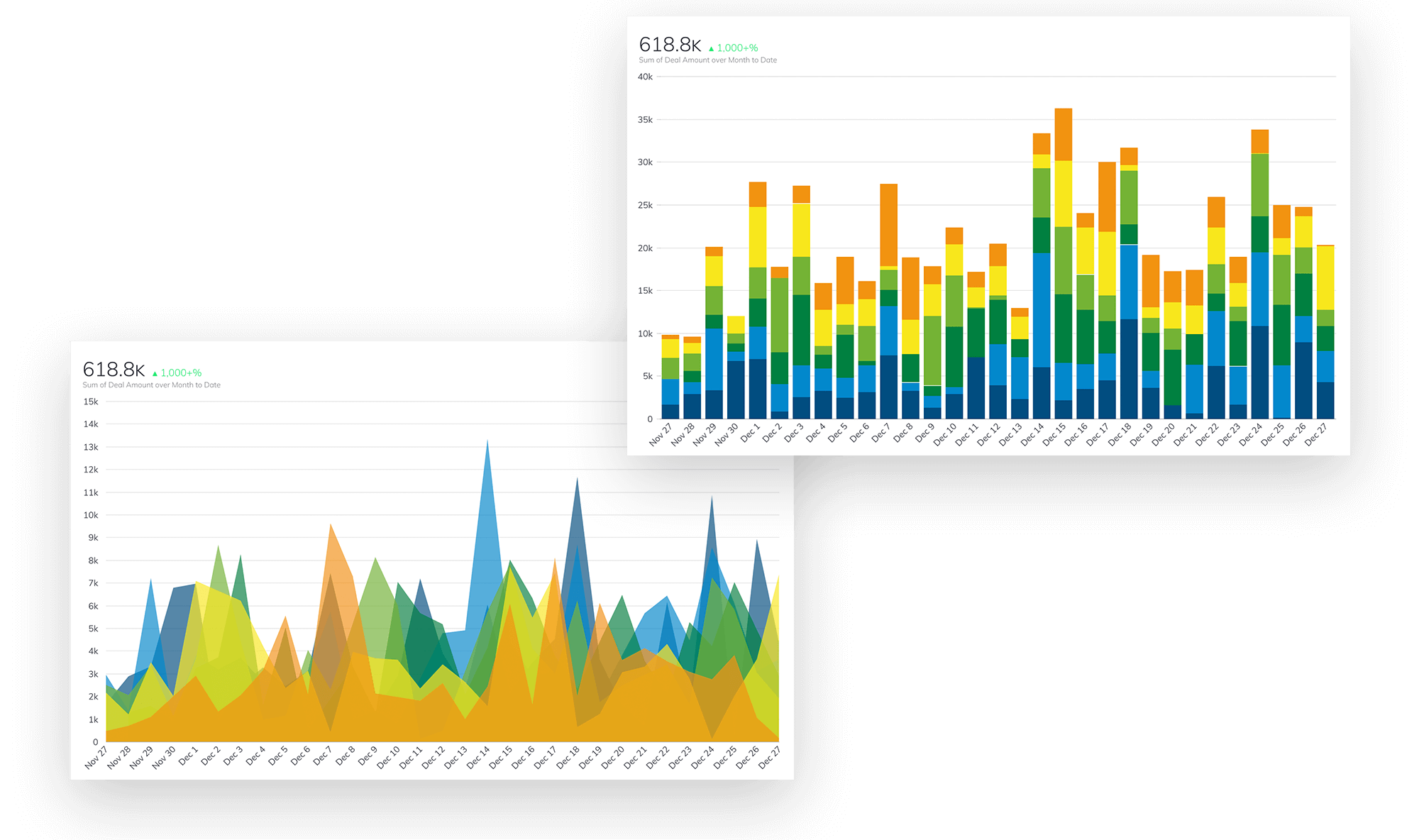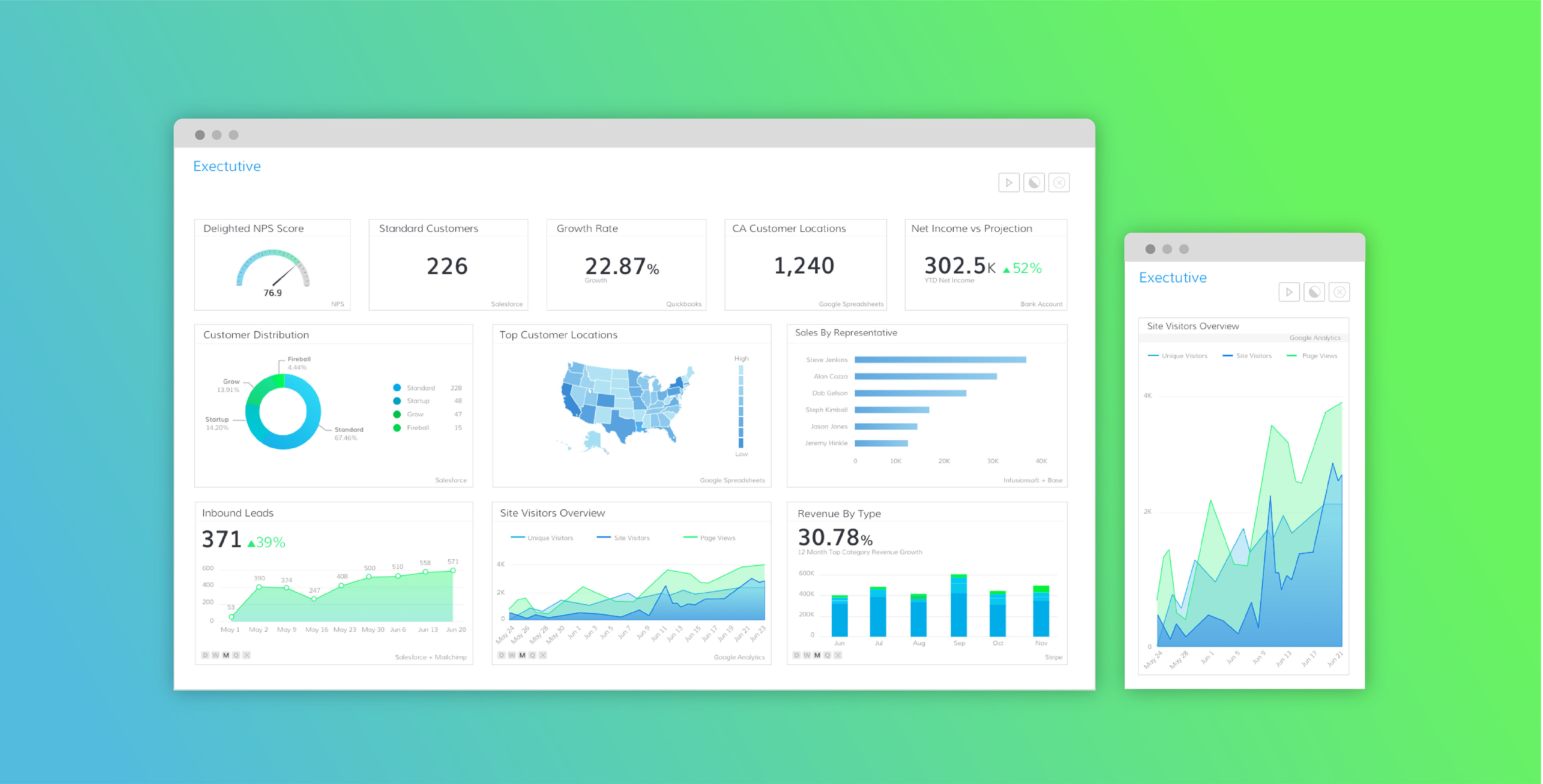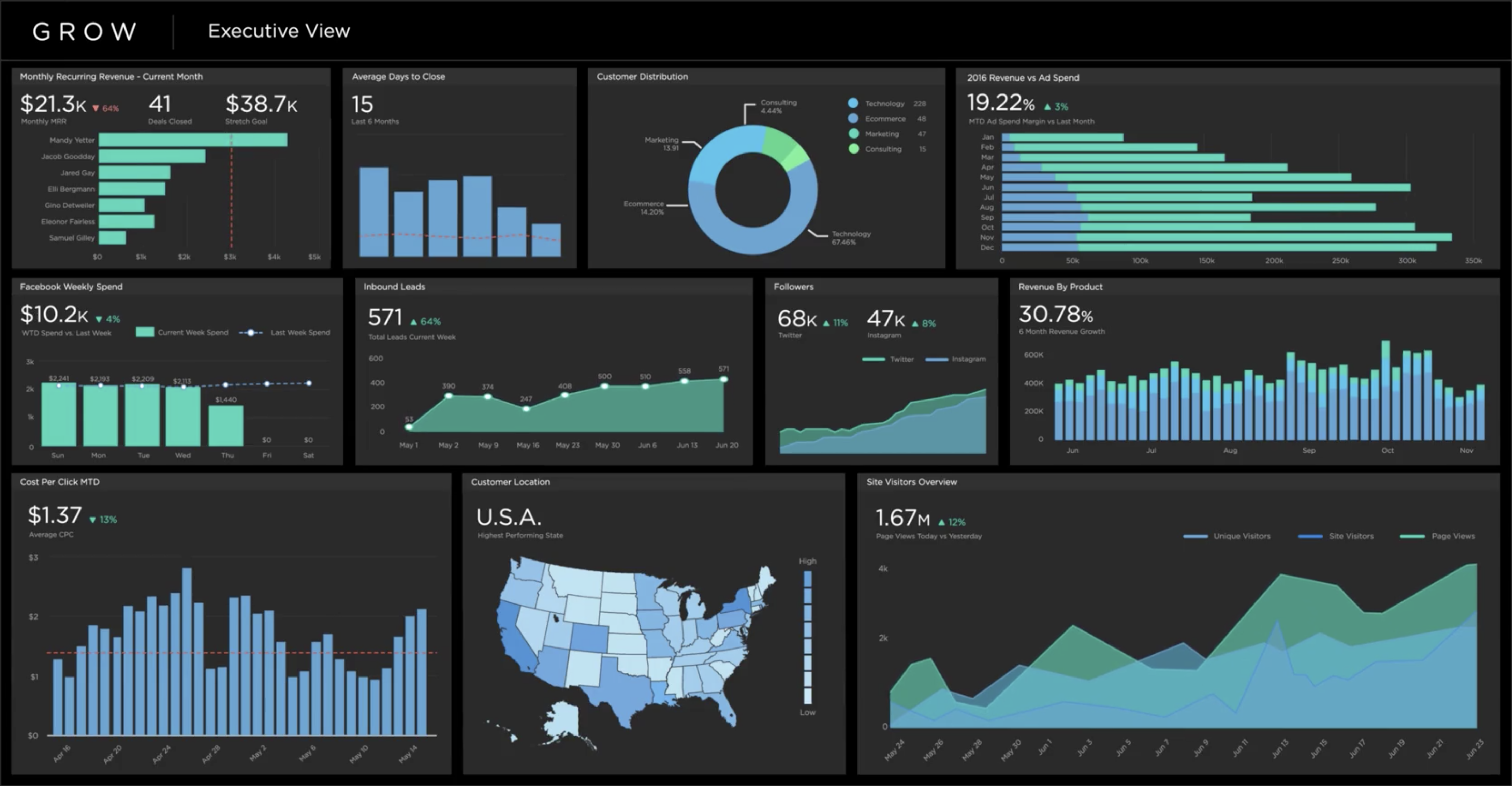Grow: No Enterprise Too Small to Turn Info Into Intel
Data: a term once associated with 80s era computer nerds or that pale greenish dude from Star Trek: Next Generation.
Now, data is often called things like the new currency, or today’s most valuable resource. While data is not gold, cash, oil or nuclear fission—no business in the digital economy can function without it.
Data streams in, cascading and potentially drowning those wading through its unsorted content. Navigating the torrential dark waters of raw data was once a task only the most powerful super processors could handle, supported by a highly trained group of super nerds.
Not to mention that only behemoth corporate enterprises could afford such vast computational and human resources.
Until Grow.

Grow with a little help from our friends
As the name suggests, Grow wasn’t conceived as a tool to help multinational megacorps feed their bottom line and notch up their share price. Grow was designed specifically for businesses that are spreading their wings and learning to fly.
There’s zero correlation between a company’s size and the amount of data it can collect. This spark set Rob Nelson off on his journey to provide top-grade data analysis and reporting to smaller companies at more affordable rates, and without the need for huge teams of trained coders to run it.
It started in 2014 in the technologically-unassuming (but breathtakingly-beautiful) state of Utah. Now Grow is being used by thousands of companies, and it’s backed by some serious high-profile investors.
Among those investors: HubSpot, a relationship is far from random. It’s about shared values.
“Early on at Grow, I used to say we were “the HubSpot of BI,” writes Nelson on the Grow blog. The connection harks back to the focus on SMEs, as HubSpot brought marketing automation specifically to smaller firms. Have you heard the story of the struggling pool guy who became a multimillionaire with HubSpot?
For Nelson, it’s not a far stretch to believe that Grow can also deliver such proverbial rags-to-riches results.
That path to success is strewn with Business Intelligence (BI).

Intelligent means not confounding your terms
What is BI? How is it defined in comparison to data, or metrics, or analytics? Haven’t we all been a bit guilty of using these terms interchangeably?
Say raw data is mere business information. Metrics make sense of that information, while analytics goes a step further to draw deeper conclusions or make predictions and plan strategies from those metrics. Put it all together and that’s BI.
It’s like if data represents potatoes and cream: raw ingredients that don’t amount to much on their own. Metrics are creamy mashed potatoes: what’s been done with the raw data/ingredients to get them ready for use (that is: digestible/understandable).
And finally, analytics represent the extra weight you’ve been putting on, and more importantly, the personal goal to eat healthier. That is, getting in shape (the analytics) is a strategy—a plan on how to move forward.
Or maybe you’re looking for a more relevant breakdown for ecommerce?:
Data is 10 online sales on Monday and 20 on Tuesday
Metrics says that twice as many people made purchases on Tuesday than on Monday
Analytics determines that perhaps fewer people are doing online shopping on Mondays, and proposes a strategy from there:
Try having Monday promotions to attract more people
Or, spend less time advertising on Mondays since it will reach fewer people
Grow understands the importance of clearly defining and unifying data, metrics, and analytics into BI. In fact, they even call their customer service reps “Business Intelligence Engineers.”
A brief breakdown of Grow
Grow collects and consolidates data from over 140 sources, then using a flexible metrics adjustor, they create clear visual reports which are easily shareable throughout entire teams.
They’ve got social media integrations, sales integrations with the likes of Salesforce, accounting integrations with platforms like Quickbooks, analytics from Google to Amazon, CRMs from Zoho to Pipedrive, customer service integrations with Freshdesk, development with Zapier and GitHub, ecommerce from Shopify, project management from Trello... and that’s just the tip of the iceberg.
From there you pick a Dataset, which is defining your metrics. This is data prep work or data cleaning, and Grow handles all the technical stuff so that users waste no time getting results.

There are also hundreds of preset templates for Datasets called Playbooks. What they do is apply data transforms to datasets, which means they take raw data and perform transformational actions like filtering, grouping, sorting, summing and making ratioed comparisons.
Everything goes into their Smart Builder, a dashboard separated into two sections: data and charts.
As you play around with the data on one side, applying datasets and creating new metrics, the smart builder automatically makes “smart assumptions” as to how you want to see that data charted. Making changes is easy and instantaneous.
From there it’s all about one of Grow’s most appealing stages: creating visuals.
There are about 20 different kinds of visual charts to choose from; like pies, maps, gauges, and funnels. Each visual exhibits the calming aesthetic of pastel geometric minimalism.

Nurturing a data culture
The above run-through covers the first three steps outlined in their ‘how it works’ page: “Connect your data, create a dataset, create beautiful visuals.”
However, something extra must be said about their fourth and final point: “Deploy your team,” which ties into their desire to “create a data culture” within companies.
Technically, this is done in three ways. Firstly, there’s a mobile app that is constantly updating by the minute. Secondly, there are regularly scheduled email reports which summarize the most important information.
The main one, however, is TV mode, which casts a master collection of living, moving charts, which is meant to be displayed on huge screens across the office.
All this is designed to create a data culture through wide team deployment. But why is it so important?
Because, according to Grow, this “leads to a greater sense of ownership and accountability among individual contributors, because they know what your company’s goals are, and they know how they’re contributing to achieving those goals.”

Universally-accessible data, sorted by intelligent metrics, and used for analytical purposes to create strategies, all serve to harmonize the many roles from various departments within a single organization—no matter how small or start-uppy.
This crushes the alienating feeling individuals might otherwise have when they can’t grasp how their time, energy and creativity fit into the final product.
Intelligent growth
Grow is more than a data-consolidating dashboard. It is the dexterous fingers on the pulse of a living and breathing body-enterprise. It is eyes on growth, and ears tuned to the winds of change.
Translating business information into business intelligence is how small and medium-sized enterprises can truly expect to grow.




